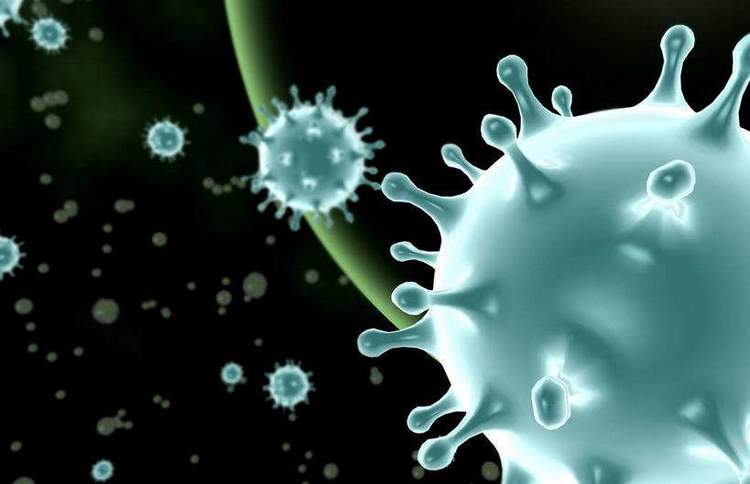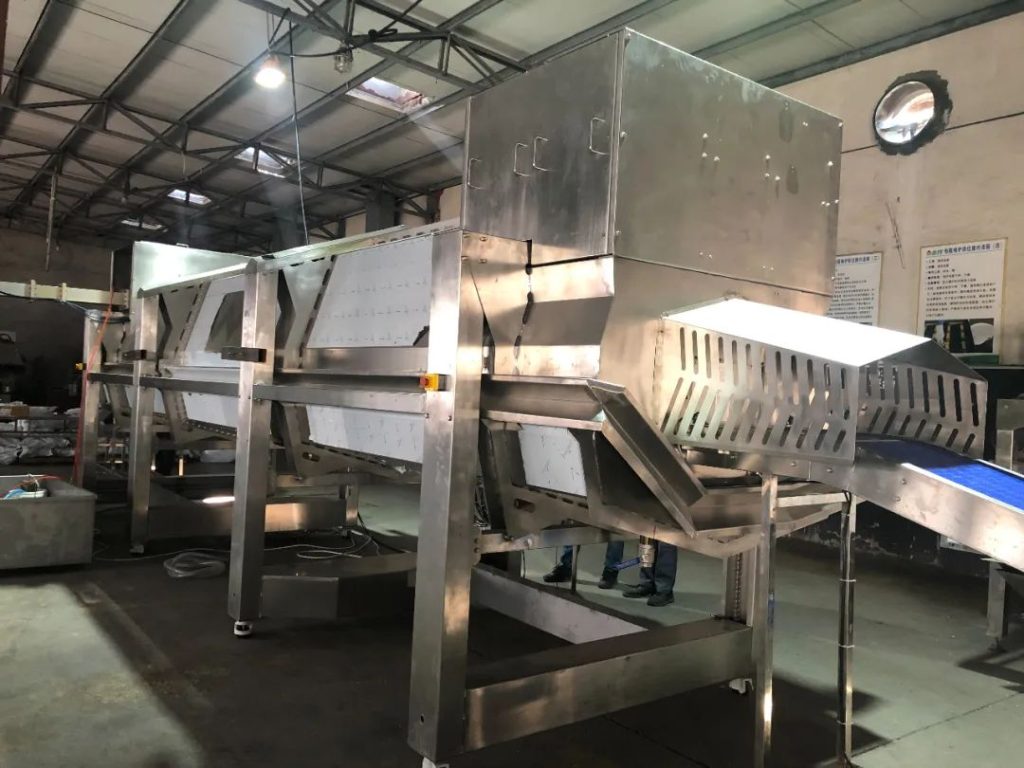“靠山吃山,靠海吃海”,从古至今,中国人都保持着这样的饮食习惯。随着技术方面的发展,食物不再局限于时间、空间、地域,能够快速运输到各个区域,最后流上消费者的餐桌上,对于一些新鲜的食材,这又是怎样保持其的新鲜程度呢?这就涉及到食品冷链啦!
From ancient times to the present, Chinese people have maintained this dietary habit of relying on the mountains to eat, and relying on the sea to eat. With the development of technology, food is no longer limited to time, space, and geography. It can be quickly transported to various regions and finally flow onto the dining table of consumers. How can we maintain the freshness of some fresh ingredients? This involves the food cold chain!
食品冷链消毒杀菌方式目前状况Current status of food cold chain disinfection and sterilization methods
谈起食品冷链这一块,不得不提及现下的冷链技术。
1、热力杀菌
由于冷链系统的标配是低温,这种的方式并不适合冷链系统;
2、化学制剂
会产生对人体有害的化学物质,无法应用于食品杀菌领域;
3、臭氧杀菌
由于臭氧本身对人体有害,需要在无人条件下进行,且杀菌时间长,但冷链系统封闭且需要人手,因此并不适用。
4、辐射杀菌
对人体亦会产生危害,因此也不适合。
When it comes to the food cold chain, it is necessary to mention the current cold chain technology.
- Thermal sterilization
Due to the low temperature standard configuration of cold chain systems, this approach is not suitable for cold chain systems;
- Chemical preparations
Chemical substances that are harmful to the human body cannot be applied in the field of food sterilization;
- Ozone sterilization
Due to the harmful effects of ozone on the human body, it needs to be carried out under unmanned conditions and has a long sterilization time. However, the cold chain system is closed and requires human hands, so it is not suitable.
- Radiation sterilization
It can also cause harm to the human body, so it is not suitable.

种种情况利害关系可以看出,这些消毒杀菌方式存在着限制问题,当下如何解决这问题?让食品安全更加有效?这时候微波杀菌技术就走入了行业人士的眼里。
From various situations and interests, it can be seen that these disinfection and sterilization methods have limitations. How can we solve this problem now? Make food safety more effective? At this point, microwave sterilization technology has entered the eyes of industry professionals.
1、微波杀菌与臭氧、辐射杀菌方案对比
1、Comparison of microwave sterilization with ozone and radiation sterilization schemes
(1)臭氧杀菌
原理:臭氧灭菌或抑菌作用,通常是物理的、化学的及生物学等方面的综合结果。而杀灭细菌、霉菌类微生物则是臭氧首先作用与细胞膜,使细胞膜的构成收到损伤,导致新陈代谢障碍并抑制其生长,臭氧继续渗透破坏膜内脂蛋白和脂多糖,改变细胞通透性,导致细胞溶解、死亡。
优点:杀菌彻底,无残留,杀菌广谱,可杀灭细菌繁殖体和芽孢、病毒、真菌等,并可破坏肉毒杆菌毒素。
缺点:对杀菌后的物质无保护性余量;臭氧是有毒气体过量会使人的呼吸系统出现障碍,这就要求密封使用人不能在臭氧过量的环境中停留过长时间。
(1) Ozone sterilization
Principle: Ozone sterilization or antibacterial effect is usually a comprehensive result of physical, chemical, and biological aspects. And killing bacteria and fungi is the first action of ozone on the cell membrane, causing damage to the composition of the cell membrane, leading to metabolic disorders and inhibiting its growth. Ozone continues to penetrate and destroy the lipoproteins and lipopolysaccharides inside the membrane, changing cell permeability, leading to cell dissolution and death.
Advantages: Thorough sterilization, no residue, broad-spectrum sterilization, can kill bacterial propagules, spores, viruses, fungi, etc., and can also destroy botulinum toxin.
Disadvantage: There is no protective residue on the substance after sterilization; Ozone is a toxic gas that can cause respiratory disorders in humans, which requires sealed users not to stay in an environment with excessive ozone for too long.
(2)辐射杀菌
自从原子能和平利用以来,经过40多年的研究开发,人们成功地利用原子辐射技术进行食品杀菌保鲜。辐照就是利用X射线、γ射线或加速电子射线(最为常见的是Co60和Cs137的γ射线)对食品的穿透力以达到杀死食品中微生物和虫害的一种冷灭菌消毒方法。受辐照的食品或生物体会形成离子、激发态分子或分子碎片,进而这些产物间又相互作用,生成与原始物质不同的化合物,在化学效应的基础上,受辐照物料或生物体还会发生一系列生物学效应,从而导致害虫、虫卵、微生物体内的蛋白质、核酸及促进生化反应的酶受到破坏、失去活力,进而终止农产品、食品被侵蚀和生长老化的过程,维持品质稳定。
优点:辐射穿透力强,杀菌均匀彻底,能够照射密封包装的新产品,可连续操作。适用于大型加工。
缺点:辐照技术的杀菌效果很好,但辐照照射如果把握不好,会改变食品的分子结构,从而影响食用者安全,一些含水量比较多的食品不适用,且易氧化和变色。食品领域的杀菌技术已渐渐被瞬间杀菌的微波技术所替代。
(2) Radiation sterilization
Since the peaceful use of atomic energy, after more than 40 years of research and development, people have successfully used atomic radiation technology for food sterilization and preservation. Radiation is the use of X-rays A cold sterilization and disinfection method in which gamma rays or accelerated electron rays (most commonly Co60 and Cs137 gamma rays) penetrate food to kill microorganisms and pests in the food. Irradiated food or organisms can form ions, excited molecules, or molecular fragments, which then interact with each other to generate compounds different from the original material. On the basis of chemical effects, irradiated materials or organisms can also undergo a series of biological effects, leading to the destruction and loss of vitality of proteins, nucleic acids, and enzymes that promote biochemical reactions in pests, insect eggs, and microorganisms, thereby terminating the process of erosion and aging of agricultural products and food, and maintaining quality stability.
Advantages: Strong radiation penetration, uniform and thorough sterilization, able to irradiate new products in sealed packaging, and can be operated continuously. Suitable for large-scale processing.
Disadvantages: The sterilization effect of irradiation technology is very good, but if irradiation is not well controlled, it can change the molecular structure of food, thereby affecting the safety of consumers. Some foods with high water content are not suitable and are prone to oxidation and discoloration. The sterilization technology in the food industry has gradually been replaced by the instantaneous sterilization microwave technology.
(3)微波杀菌
1. 微波能的热效应:在一定强度微波场的作用下,食品中的虫类和菌体会因分子极化现象,吸收微波能升温,从而使其蛋白质变性,失去生物活性。微波的热效应主要起快速升温杀菌作用;
2. 微波能的非热效应:高频的电场也使其膜电位、极性分子结构发生改变;使微生物体内蛋白质和生理活性物质发生变异,而丧失活力或死亡。在灭菌中起到了常规物理灭菌所没有的特殊作用,也是造成细菌死亡原因之一;
3. 微波杀菌、保鲜是微波热效应和非热效应共同作用的结果。一般情况下,在食品杀菌处理到相同的菌落等级条件下,微波它所需要的加热时间更短,加热温度相对没那么高。另外,把加热到相同温度条件下,微波比其他灭菌釜杀菌之后的菌落数量会更低,杀菌等级更高。一听到微波杀菌,感觉是个挺高大上的词语。目前,对食品类的物料进行杀菌处理,确保产品质量安全的众多杀菌设备中,微波杀菌设备就是是其中的一种。由于食品在生产、保存、运输和销售过程中极易污染变质,该类设备的应用,能够达到食品灭菌、保鲜的目的。
(3) Microwave sterilization
- Thermal effect of microwave energy: Under the action of a certain intensity microwave field, insects and bacteria in food can absorb microwave energy and heat up due to molecular polarization, causing protein denaturation and loss of biological activity. The thermal effect of microwaves mainly plays a rapid heating and sterilization role;
- Non thermal effects of microwave energy: High frequency electric fields also cause changes in membrane potential and polar molecular structure; Mutation of proteins and physiological active substances in microorganisms, resulting in loss of vitality or death. It plays a special role in sterilization that conventional physical sterilization does not have, and is also one of the causes of bacterial death;
- Microwave sterilization and preservation are the combined effects of microwave thermal and non thermal effects. In general, when food is sterilized to the same colony level, microwave heating requires a shorter heating time and a relatively lower heating temperature. In addition, heating to the same temperature conditions will result in a lower number of bacterial colonies and a higher level of sterilization compared to other sterilization kettles. When I hear about microwave sterilization, I feel like it’s a rather sophisticated term. At present, microwave sterilization equipment is one of the many sterilization devices used to sterilize food materials and ensure product quality and safety. Due to the high risk of food contamination and spoilage during production, storage, transportation, and sales, the application of such equipment can achieve the purpose of food sterilization and preservation.

2、微波杀菌的优势
2、The advantages of microwave sterilization
01 时间短、速度快
常规热力杀菌是通过热传导,对流或辐射等方式将热量从食品表面传至内部。要达到杀菌温度,往往需要较长时间。微波杀菌是微波能与食品及其细菌等微生物直接相互作用,热效应与非热效应共同作用,达到快速升温杀菌作用,处理时间大大缩短,各种物料的杀菌作用一般在3-5分钟。
02 节约能源
常规热力杀菌往往在环境及设备上存在热损失,而微波是直接对食品进行作用处理,因而没有额外的热能损耗。此外,其电能到微波能的转换效率在70-80%,相比而言,一般可节电30-50%。
03 表面和内部都同时进行
常规热力杀菌是从物料表面开始,然后通过热传导传至内部。存在内外温差。为了保持食品风味,缩短处理时间,往往食品内部没有达到足够温度而影响杀菌效果。由于微波具有穿透作用,对食品进行整体处理时,表面和内部都同时受到作用,所以消毒杀菌均匀、彻底。
04 保持营养成分和传统风味
微波杀菌是通过特殊热和非热效应杀菌,与常规热力杀菌比较,能在比较低的温度和较短的时间就能获得所需的消毒杀菌效果。实践表明,一般杀菌温度在75-80℃就能达到效果,此外,微波处理食品能保留更多的营养成份和色、香、味、形等风味,且有膨化效果。如常规热力处理的蔬菜保留的维生素C是46-50%,而微波处理是60-90%,常规加热猪肝维生素A保持为58%,而微波加热为84%。
05 便于控制
微波食品杀菌处理,设备能即开即用,没有常规热力杀菌的热惯性,操作灵活方便,微波功率能从零到额定功率连续可调、传输速度从零开始连续调整,便于控制。
06 设备简单,工艺先进
与常规消毒杀菌相比,微波杀菌设备,不需要锅炉,复杂的管道系统,煤场和运输车辆等,只要具备水、电基本条件即可。
07 改善劳动条件,节省占地面积
设备的工作环境温度低、噪音小,极大地改善了劳动条件。整套微波设备的操作人员只需2-3人。广泛用于牛肉干、猪肉脯、鱼片、酱囟肉、鸭肉、鸡肉等制品的热化、干燥和杀菌。肉制品经微波杀菌后,其鲜度、嫩度、风味均保持原样,卫生指标完全可低于国家食品卫生标准,货架贮存时间可达1-2个月,微波对肉制品杀菌、保鲜技术的成功应用。
我们知道,食品加工企业因生产过程中杀菌不彻底被勒令整改的事件时有发生。随着微波加热技术的发展以及人们的认识和掌握,相信微波杀菌设备的优势将得到更多人的认可。由此可见,冷链食品的全面消毒显得愈发重要,而微波杀菌独有的优势,可以作为打好疫情防控阻击战的有力武器。
01 Short time and fast speed
Conventional thermal sterilization transfers heat from the surface of food to the interior through heat conduction, convection, or radiation. To reach the sterilization temperature, it often takes a long time. Microwave sterilization is the direct interaction between microwave energy and microorganisms such as food and bacteria, with both thermal and non thermal effects working together to achieve rapid heating and sterilization, greatly reducing processing time. The sterilization effect of various materials is generally 3-5 minutes.
02 Energy saving
Conventional thermal sterilization often results in heat loss in the environment and equipment, while microwaves directly treat food without additional heat loss. In addition, the conversion efficiency of its electrical energy to microwave energy is between 70-80%, which can generally save 30-50% of electricity.
03 Simultaneous surface and interior testing
Conventional thermal sterilization starts from the surface of the material and then transfers to the interior through thermal conduction. There is a temperature difference between inside and outside. In order to maintain the flavor of food and shorten processing time, the internal temperature of food is often not reached enough, which affects the sterilization effect. Due to the penetrating effect of microwaves, both the surface and interior of food are affected simultaneously during overall treatment, resulting in uniform and thorough disinfection and sterilization.
04 Maintaining Nutritional Content and Traditional Flavors
Microwave sterilization is achieved through special thermal and non thermal effects. Compared with conventional thermal sterilization, it can achieve the desired disinfection and sterilization effect at lower temperatures and in a shorter period of time. Practice has shown that a general sterilization temperature of 75-80 ℃ can achieve the desired effect. In addition, microwave treatment of food can retain more nutrients and flavors such as color, aroma, taste, and shape, and has a puffing effect. Vegetables treated with conventional heat retain 46-50% of vitamin C, while microwave treatment retains 60-90%. Conventional heating of pig liver retains 58% of vitamin A, while microwave heating retains 84%.
05 for easy control
Microwave food sterilization treatment, equipment can be used immediately, without the thermal inertia of conventional thermal sterilization, flexible and convenient operation, microwave power can be continuously adjusted from zero to rated power, and transmission speed can be continuously adjusted from zero, making it easy to control.
06 Simple equipment and advanced technology
Compared with conventional disinfection and sterilization, microwave sterilization equipment does not require boilers, complex pipeline systems, coal yards, and transportation vehicles, as long as it has basic water and electricity conditions.
07 Improve working conditions and save land area
The working environment of the equipment is low in temperature and low in noise, greatly improving working conditions. The entire microwave equipment only requires 2-3 operators. Widely used for heating, drying, and sterilization of products such as beef jerky, pork jerky, fish fillets, soy sauce, duck meat, chicken, etc. After microwave sterilization, the freshness, tenderness, and flavor of meat products remain unchanged, and the hygiene indicators can be completely lower than the national food hygiene standards. The shelf storage time can reach 1-2 months. The successful application of microwave sterilization and preservation technology for meat products.
We know that incidents of food processing enterprises being ordered to rectify due to incomplete sterilization during the production process often occur. With the development of microwave heating technology and people’s understanding and mastery, it is believed that the advantages of microwave sterilization equipment will be recognized by more people. From this, it can be seen that comprehensive disinfection of cold chain food is becoming increasingly important, and the unique advantages of microwave sterilization can serve as a powerful weapon to fight against the epidemic.